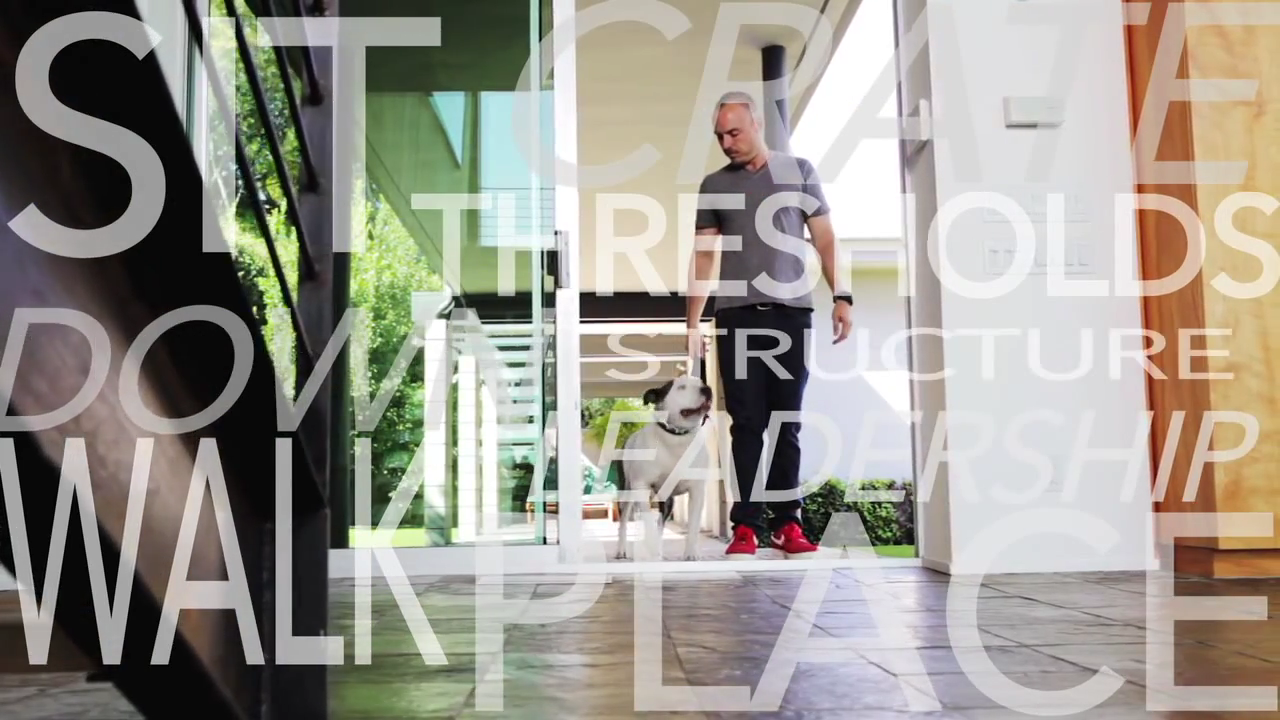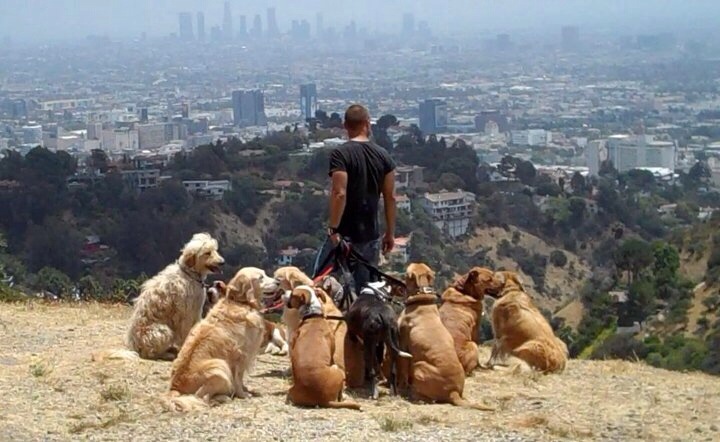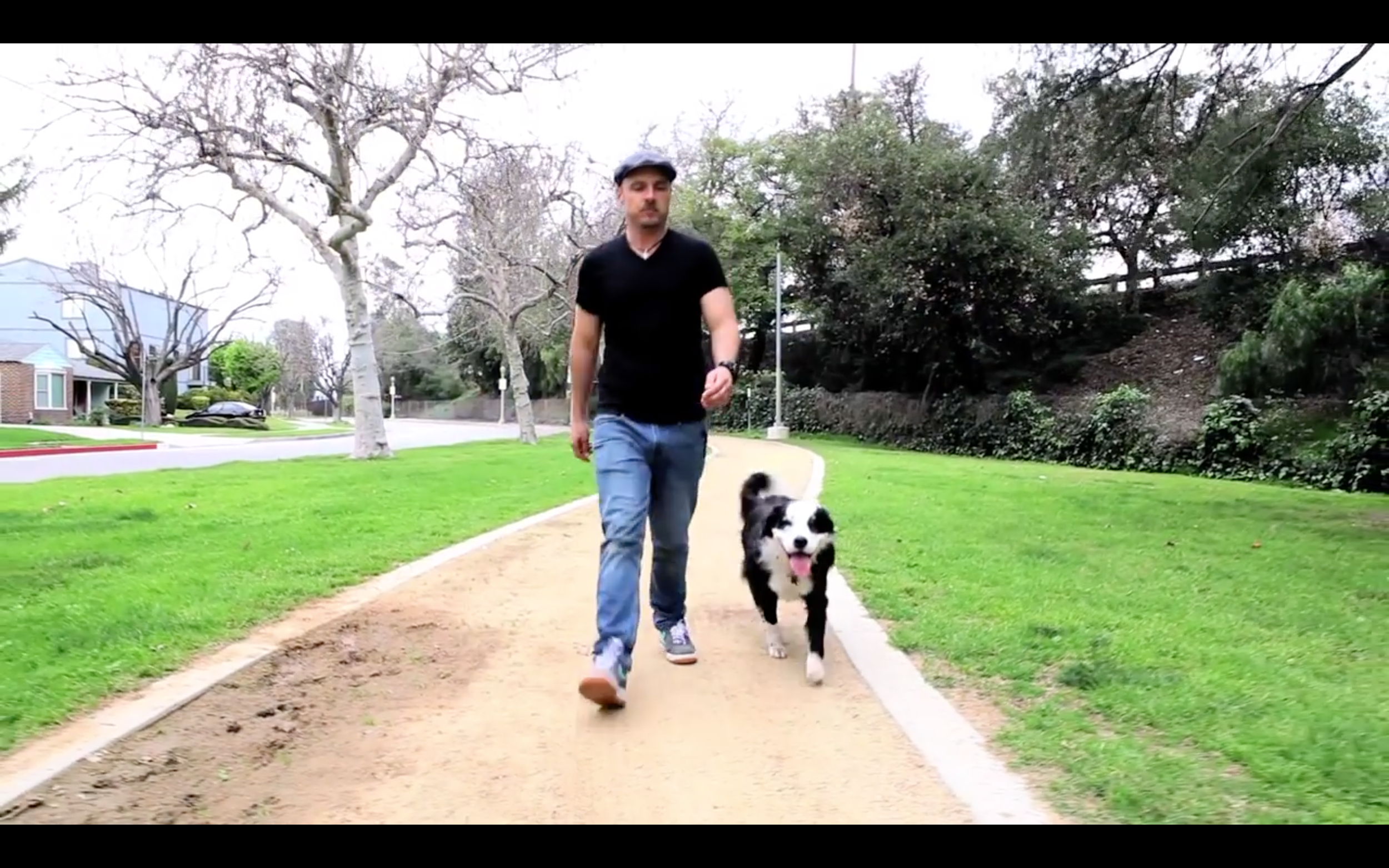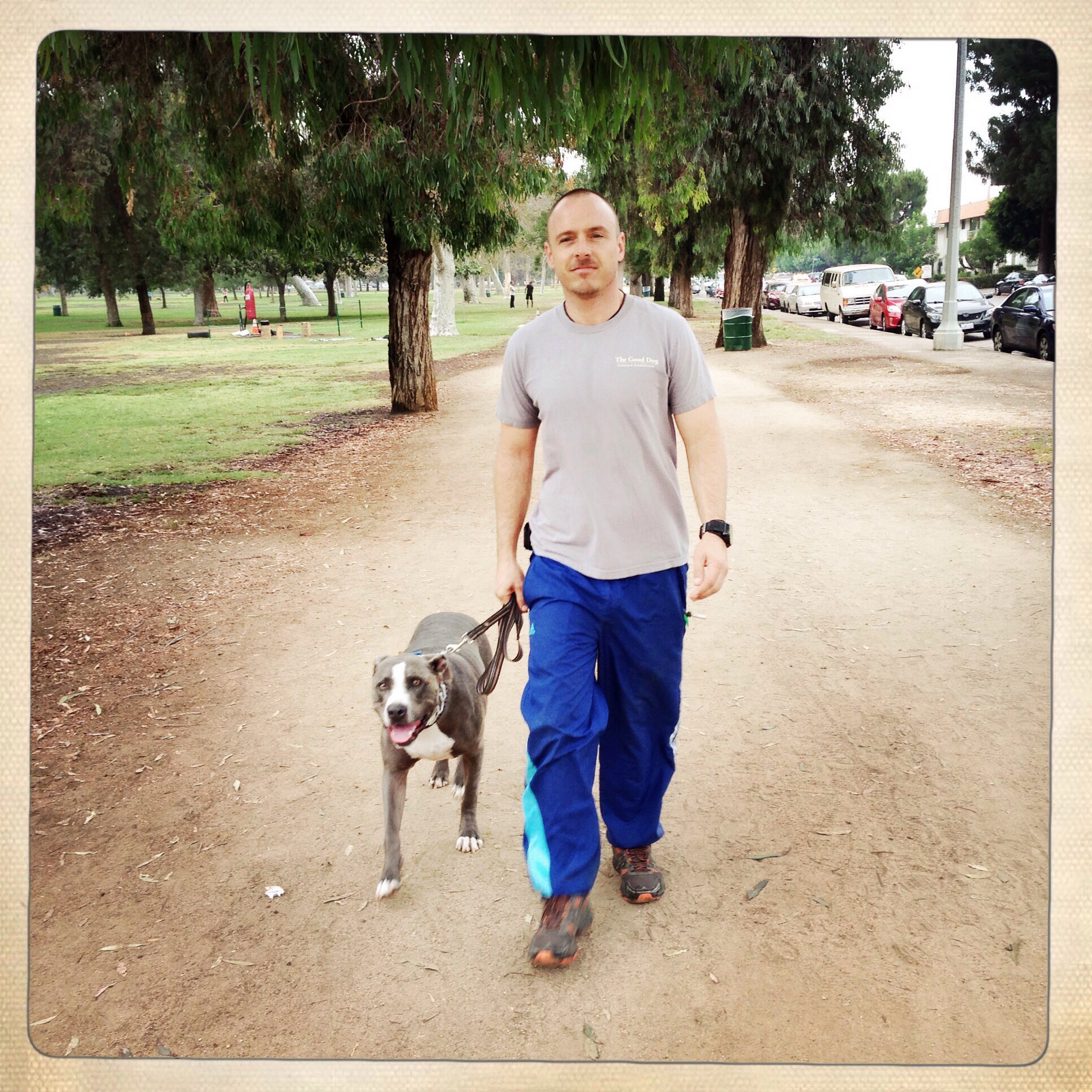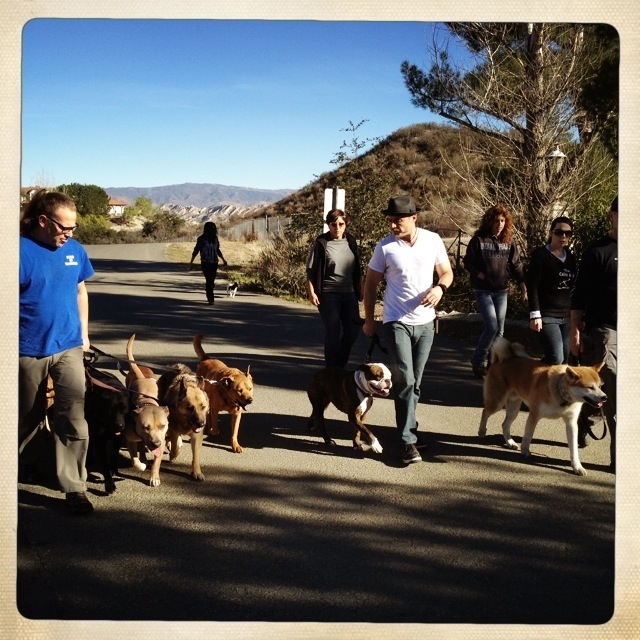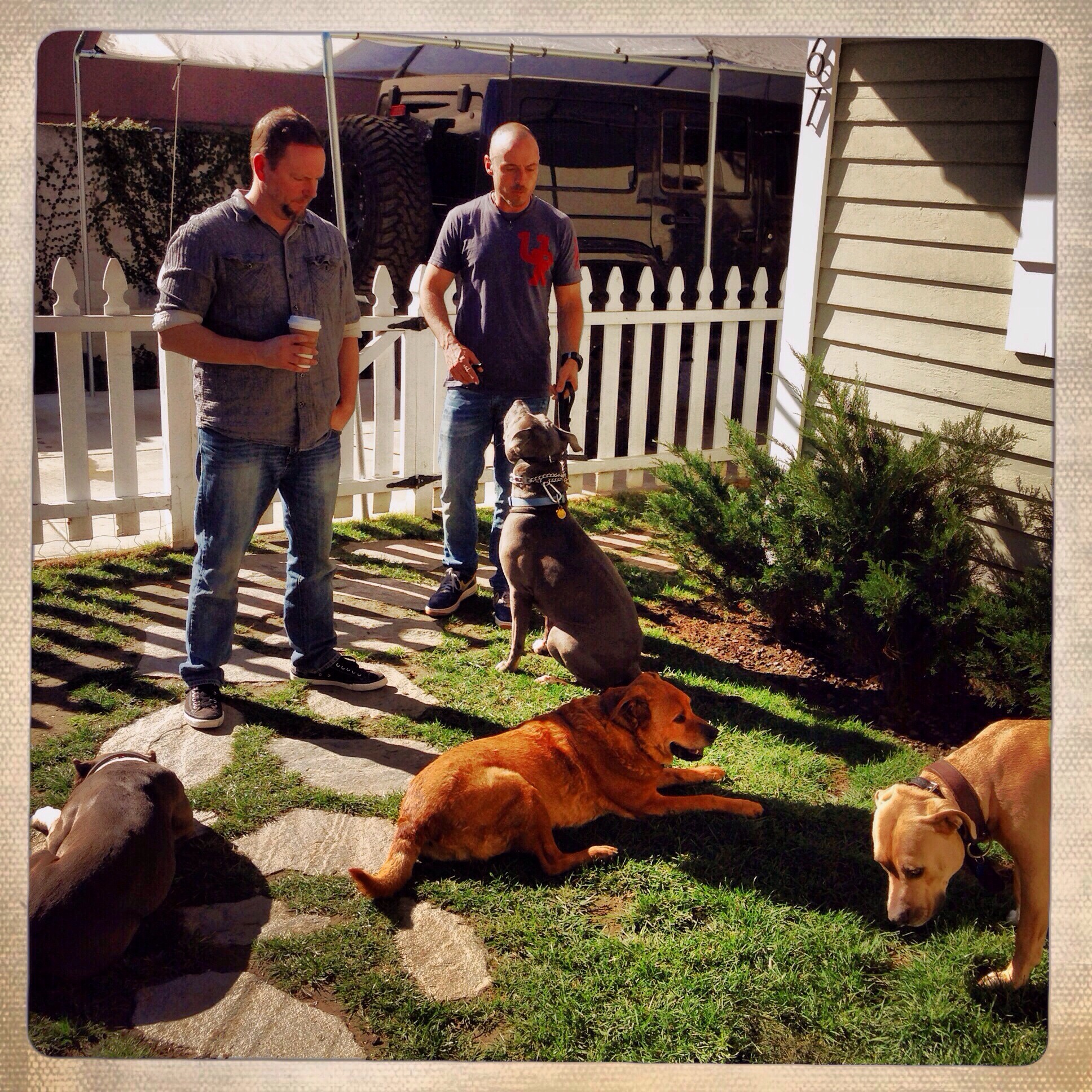 By Sean O'SheaHey guys, I often get asked about introducing new dogs to your house/pack. There are many approaches to create initial introductions (walking together for example), but I wanted to share my best secrets for creating long-term, full comfort when new dogs are freely interacting and living together.What are those secrets? Ready for it? Time, structure, and leadership. (I know, I know, you we're probably hoping for something more exotic, but this stuff is simple. :))Dogs want and need to know a few things so they can be comfortable. They want to know what the other dog is about. Does she mean me harm? Is he someone I can trust? Am I safe? Do you belong here? What's your story? Are we going to be friends or enemies?It's your job as their leader to create the environment and the state of mind, throughout your pack, which will allow positive, tension-free relationships to flourish.Most of the issues I see that go down with new dogs being introduced to each other in the home are totally avoidable and stem from dogs being let loose far too quickly, in a chaotic, stressed, nervous, and excited state to figure things out on their own. Dogs in these states are ripe for the fighting and bad-choice-making. And here's the thing, once dogs have had a serious squabble you've got a very good chance of a grudge and long-term distrust being created. That means lots of trouble and tons of work to even attempt to resolve it and create harmony again.So instead of chaos, here's what I recommend:-Don't be in a rush. Take as much time as needed. This could be two days, two weeks, or two months. It all depends on the dogs. But I want to make sure you understand the time parameters I'm suggesting as possibilities.-Teach all dogs in the pack the basics: Walk politely on leash, be polite at thresholds, wait calmly for food, have a rock solid "place" command, be polite around humans and their space.-Get ALL dogs (not just the new guy!) used to being consistently in a good, relaxed, obedient state. Crazy, disobedient, "out of their tree" dogs are just asking for fights with the wrong dog.-Be aware of whether you have a resource guarder in your midst. This can be guarding you, guarding food, guarding toys, guarding space etc. If you have one of these guys, you will have to be hyper-conscious about removing points of competition and contention, and may have some heavy-duty management in your future. (I recommend working on the guarder and your relationship to remove as much of this as possible.)-Have dogs learn to simply exist around each other. Being in "place" is a great way for dogs to very comfortably get used to each other's presence without the pressure of having to make decisions about each other. (Decisions = stress. Stress = bad choices.) Consider mutual "place" commands as a low-impact meet and greet. You can slowly add more movement with one dog at a time and gauge the reactions to see your progress.-Be patient! And when you think you've been patient, be patient some more. :) You're going to have these dogs for a long time, there's no rush to create magic instantly.-Be aware of if you have a nervous, insecure, or just plain scrapper in your midst. These guys need way more time than the average dog to relax and trust. Add a few more of my "be patient" reminders to your list. (Note: some dogs with serious fighting issues might not be safe around other dogs even after a protracted introductory period. If you're unsure get a pro involved to help you assess.)-Keep excitement, affection, and chaos to a minimum during the initial period. All of these things can create stress, competition, tension, and fights.-Use crates to ensure all dogs are safe when unsupervised. Do not leave dogs alone together who are new to each other. Many things in the home can trigger excitement, stress, competition, and ultimately fights (doorbells, delivery people, squirrels etc) even in your absence.-Use crates to have dogs simply get comfy around each other. You can crate dogs near each other and help remove novelty, uncertainty and concern. But you have to ensure that that all dogs in the crates are practicing awesome behavior. If one or more of the dogs are stressed, barking, whining, carrying on, trying to escape, panicky, demanding or bratty, then you've got a recipe for disaster brewing. (Imagine living next to the worst neighbor in the world and how stressed, angry, and unhappy that makes you feel. Same goes for your dogs.) If you can't ensure great behavior, crate in different rooms.-Walk the dogs together. They don't need to be right next to each other to benefit from the walk together. As they show more comfort in each other's presence you can slowly close the distance.-Don't feed new dogs close to each other. Food, like affection creates competition and stress, and by now we know what that leads to :)-Be careful with play and toys. As you get more comfortable, remember that dogs who are cool with each other in one context and environment can lose their cool when excitement and competition (toys and play) are introduced. Watch for tension and serious intent and address/diffuse it quickly.-Here's the big Kahuna: Dogs are constantly assessing each other and you. If one of the dogs (doesn't matter if it's the new dog or your long-time dog) sees the other dog or dogs misbehaving, being bratty, out of control, pulling on leash, barking/being reactive at other dogs on the walk, demanding attention from you, guarding space or objects, barking in the house incessantly, able to push into your personal space, and that you the human do not have control of and over him, you have another recipe for disaster brewing. Just like you see a dog that is out of control and say "good grief, what an annoying, out of control, dangerous, pushy, little so and so" so do the dogs in your life. If you won't create and demand polite, respectful, comfortable, courteous behavior, then you can be almost guaranteed that one of your dogs will. Take control, create a respectful, calm, and polite environment and all the dogs will feel more comfortable and they will thank you with nice, non-fighting behavior.Ok, so it sounds like a giant pain in the butt that's going to take forever, but it's not really that bad. It's a little pain, and it does take a little time, but it's so worth the pay-off of long term comfort and safety with your dogs. Of course there are many dogs that you could throw all this out the window, you could turn them loose instantly and have zero issues...forever! But unfortunately I get all the calls for the dogs where it didn't work out that way. :)If you know you've got a dog that isn't perfect and has some issues, follow these recommendations very closely, be super patient and prepared for a longer haul. Watch the dogs to see how the comfort level looks, and then you can assess where to move from there. If you have an easy dog and you're bringing a new dog in, use these recommendations as well, and watch your dogs. They will tell you (absence of tension, staring, side-eyeing, growling etc) when they feel comfortable and ready for more freedom and interaction.Just remember, it's so much easier and takes far less time (and money!!) to create a great relationship with new dogs from the get-go than it does to try to undo nasty tension and animosity down the line. :)----—CONNECT WITH US ON Facebook, Twitter, Instagram, YouTube for more training insights, tips, a free weekly Q&A, and community interaction!Read more about us by visiting www.thegooddog.net/aboutOur groundbreaking do-it-yourself training video/PDF training booklet Learn to Train The Good Dog Way: The Foundation is now available for pre-order at a discounted price – click HERE to order your copy!
By Sean O'SheaHey guys, I often get asked about introducing new dogs to your house/pack. There are many approaches to create initial introductions (walking together for example), but I wanted to share my best secrets for creating long-term, full comfort when new dogs are freely interacting and living together.What are those secrets? Ready for it? Time, structure, and leadership. (I know, I know, you we're probably hoping for something more exotic, but this stuff is simple. :))Dogs want and need to know a few things so they can be comfortable. They want to know what the other dog is about. Does she mean me harm? Is he someone I can trust? Am I safe? Do you belong here? What's your story? Are we going to be friends or enemies?It's your job as their leader to create the environment and the state of mind, throughout your pack, which will allow positive, tension-free relationships to flourish.Most of the issues I see that go down with new dogs being introduced to each other in the home are totally avoidable and stem from dogs being let loose far too quickly, in a chaotic, stressed, nervous, and excited state to figure things out on their own. Dogs in these states are ripe for the fighting and bad-choice-making. And here's the thing, once dogs have had a serious squabble you've got a very good chance of a grudge and long-term distrust being created. That means lots of trouble and tons of work to even attempt to resolve it and create harmony again.So instead of chaos, here's what I recommend:-Don't be in a rush. Take as much time as needed. This could be two days, two weeks, or two months. It all depends on the dogs. But I want to make sure you understand the time parameters I'm suggesting as possibilities.-Teach all dogs in the pack the basics: Walk politely on leash, be polite at thresholds, wait calmly for food, have a rock solid "place" command, be polite around humans and their space.-Get ALL dogs (not just the new guy!) used to being consistently in a good, relaxed, obedient state. Crazy, disobedient, "out of their tree" dogs are just asking for fights with the wrong dog.-Be aware of whether you have a resource guarder in your midst. This can be guarding you, guarding food, guarding toys, guarding space etc. If you have one of these guys, you will have to be hyper-conscious about removing points of competition and contention, and may have some heavy-duty management in your future. (I recommend working on the guarder and your relationship to remove as much of this as possible.)-Have dogs learn to simply exist around each other. Being in "place" is a great way for dogs to very comfortably get used to each other's presence without the pressure of having to make decisions about each other. (Decisions = stress. Stress = bad choices.) Consider mutual "place" commands as a low-impact meet and greet. You can slowly add more movement with one dog at a time and gauge the reactions to see your progress.-Be patient! And when you think you've been patient, be patient some more. :) You're going to have these dogs for a long time, there's no rush to create magic instantly.-Be aware of if you have a nervous, insecure, or just plain scrapper in your midst. These guys need way more time than the average dog to relax and trust. Add a few more of my "be patient" reminders to your list. (Note: some dogs with serious fighting issues might not be safe around other dogs even after a protracted introductory period. If you're unsure get a pro involved to help you assess.)-Keep excitement, affection, and chaos to a minimum during the initial period. All of these things can create stress, competition, tension, and fights.-Use crates to ensure all dogs are safe when unsupervised. Do not leave dogs alone together who are new to each other. Many things in the home can trigger excitement, stress, competition, and ultimately fights (doorbells, delivery people, squirrels etc) even in your absence.-Use crates to have dogs simply get comfy around each other. You can crate dogs near each other and help remove novelty, uncertainty and concern. But you have to ensure that that all dogs in the crates are practicing awesome behavior. If one or more of the dogs are stressed, barking, whining, carrying on, trying to escape, panicky, demanding or bratty, then you've got a recipe for disaster brewing. (Imagine living next to the worst neighbor in the world and how stressed, angry, and unhappy that makes you feel. Same goes for your dogs.) If you can't ensure great behavior, crate in different rooms.-Walk the dogs together. They don't need to be right next to each other to benefit from the walk together. As they show more comfort in each other's presence you can slowly close the distance.-Don't feed new dogs close to each other. Food, like affection creates competition and stress, and by now we know what that leads to :)-Be careful with play and toys. As you get more comfortable, remember that dogs who are cool with each other in one context and environment can lose their cool when excitement and competition (toys and play) are introduced. Watch for tension and serious intent and address/diffuse it quickly.-Here's the big Kahuna: Dogs are constantly assessing each other and you. If one of the dogs (doesn't matter if it's the new dog or your long-time dog) sees the other dog or dogs misbehaving, being bratty, out of control, pulling on leash, barking/being reactive at other dogs on the walk, demanding attention from you, guarding space or objects, barking in the house incessantly, able to push into your personal space, and that you the human do not have control of and over him, you have another recipe for disaster brewing. Just like you see a dog that is out of control and say "good grief, what an annoying, out of control, dangerous, pushy, little so and so" so do the dogs in your life. If you won't create and demand polite, respectful, comfortable, courteous behavior, then you can be almost guaranteed that one of your dogs will. Take control, create a respectful, calm, and polite environment and all the dogs will feel more comfortable and they will thank you with nice, non-fighting behavior.Ok, so it sounds like a giant pain in the butt that's going to take forever, but it's not really that bad. It's a little pain, and it does take a little time, but it's so worth the pay-off of long term comfort and safety with your dogs. Of course there are many dogs that you could throw all this out the window, you could turn them loose instantly and have zero issues...forever! But unfortunately I get all the calls for the dogs where it didn't work out that way. :)If you know you've got a dog that isn't perfect and has some issues, follow these recommendations very closely, be super patient and prepared for a longer haul. Watch the dogs to see how the comfort level looks, and then you can assess where to move from there. If you have an easy dog and you're bringing a new dog in, use these recommendations as well, and watch your dogs. They will tell you (absence of tension, staring, side-eyeing, growling etc) when they feel comfortable and ready for more freedom and interaction.Just remember, it's so much easier and takes far less time (and money!!) to create a great relationship with new dogs from the get-go than it does to try to undo nasty tension and animosity down the line. :)----—CONNECT WITH US ON Facebook, Twitter, Instagram, YouTube for more training insights, tips, a free weekly Q&A, and community interaction!Read more about us by visiting www.thegooddog.net/aboutOur groundbreaking do-it-yourself training video/PDF training booklet Learn to Train The Good Dog Way: The Foundation is now available for pre-order at a discounted price – click HERE to order your copy!
